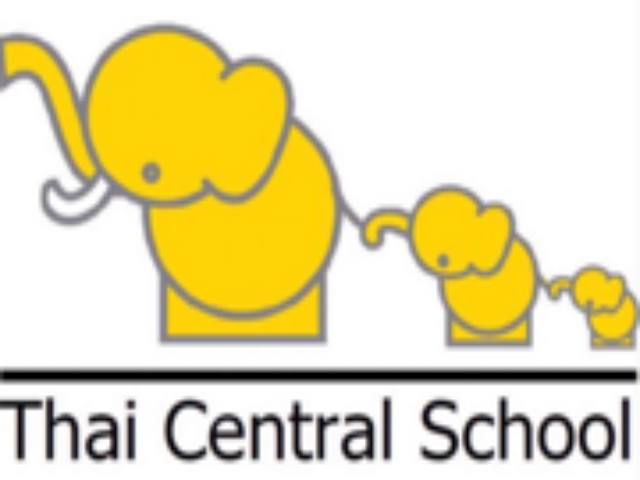
In today’s fast-paced digital landscape remote IT support has revolutionized the way businesses and individuals resolve technical challenges. Gone are the days of lengthy phone conversations and complicated step-by-step instructions that often left both users and technicians frustrated and exhausted.
Remote IT support now enables technicians to seamlessly access and diagnose devices from anywhere in the world. With just a few clicks users can grant permission for experts to view control and troubleshoot their systems in real-time. This innovative approach dramatically reduces resolution times and minimizes downtime for critical technical issues across various platforms including PCs Macs and mobile devices.
Our modern technological ecosystem demands quick efficient and secure problem-solving solutions. Remote IT support delivers exactly that—providing instant access professional expertise and comprehensive technical assistance without the need for physical presence. By leveraging cutting-edge remote access technologies we can now solve complex technical problems faster and more effectively than ever before.
Need help with your business IT? Contact AGR Technology to see how we can help
Reviews from our happy clients:
Proudly supporting clients of all sizes to succeed through digital solutions






What Is Remote IT Support?

Remote IT support represents a digital problem-solving approach where technicians access and diagnose computer systems from a different location. This method enables instant technical assistance without physical presence.
How Remote Support Works
Remote support operates through secure software connections that grant technicians temporary access to a user’s device. The process typically follows these key steps:
- Connection Request: Users initiate contact with technical support
- Permission Authorization: Customers provide consent for remote access
- Connection Establishment: Secure software creates encrypted pathway
- Diagnostics: Technicians analyze system issues in real-time
- Troubleshooting: Problems resolved through direct device interaction
Key Technologies Used
Remote IT support leverages multiple advanced technologies to ensure seamless connectivity:
| Technology | Primary Function |
|---|---|
| Remote Desktop Protocols | Enables screen sharing and device control |
| Encryption Algorithms | Secures communication channels |
| Screen Mirroring Tools | Allows real-time visual problem diagnosis |
| Cloud-Based Platforms | Facilitates instant connection across networks |
| Secure Authentication Systems | Verifies user and technician identities |
The integration of these technologies transforms traditional support models by reducing response times and minimizing technical complexity for end-users.
Benefits of Remote IT Support

Remote IT support offers transformative advantages for businesses seeking efficient and streamlined technical problem-solving. Our analysis reveals multiple critical benefits that make this approach a strategic solution for modern organizations.
Cost-Effectiveness
Remote IT support significantly reduces operational expenses through several strategic mechanisms:
- Eliminates travel costs associated with onsite technical support
- Minimizes downtime by providing immediate technical intervention
- Reduces labor expenses by enabling faster problem solving
- Decreases infrastructure requirements for support teams
Organizations can save approximately 40-60% on traditional support costs by implementing remote IT support strategies. These savings stem from reduced personnel expenses and increased operational efficiency.
Enhanced Efficiency
Remote IT support dramatically improves technical support workflow through:
- Instant access to multiple devices simultaneously
- Comprehensive diagnostic capabilities without physical presence
- Seamless screen sharing and real-time collaboration
- Centralized support management across distributed networks
Faster Problem Resolution
Remote IT support accelerates technical issue resolution through:
- Direct device access without scheduling physical appointments
- Real-time diagnostic and troubleshooting capabilities
- Immediate implementation of software fixes
- Reduced communication barriers between support teams and users
Types of Issues Resolved Remotely
Remote IT support effectively addresses a wide range of technical challenges across hardware, software, and network domains. Our experts can resolve over 80% of tech issues without requiring on-site intervention, dramatically reducing downtime and user frustration.
Hardware Troubleshooting
Remote hardware diagnostics allow our technicians to identify and resolve critical device issues instantly. We can diagnose:
- Printer and scanner malfunctions
- Software errors and other associated issues
- External device connectivity problems
- Computer peripheral performance degradation
- Hardware component compatibility checks
- System temperature and performance monitoring
Our remote diagnostic tools enable comprehensive hardware analysis without physical device access, detecting potential failures before they escalate.
Software Configurations
Software configuration challenges represent a significant portion of remote support requests. We address:
- Microsoft Office 365 configuration issues
- Operating system setting optimizations
- Software update and patch management
- Application performance tuning
- Security and compliance software configurations
By remotely accessing systems, we can quickly reconfigure settings, update software, and ensure optimal performance across multiple platforms.
Network and Connectivity Problems
Network-related issues often disrupt business operations. Our remote support resolves:
- Modem and router configuration challenges
- Email service connectivity problems
- Wi-Fi signal and bandwidth optimization
- Network security protocol implementations
- VPN and remote access configuration
We leverage advanced remote diagnostic tools to troubleshoot complex network infrastructure challenges, ensuring seamless digital connectivity.
Security Considerations
Remote IT support introduces critical security challenges that demand robust protective measures. Our comprehensive approach ensures data integrity and confidential information protection throughout remote support interactions.
Data Protection Protocols
Remote IT support requires advanced data protection protocols to safeguard sensitive organizational information. We implement multi-layered encryption strategies that protect data during transmission and access:
- End-to-End Encryption: Utilizes 256-bit SSL/TLS encryption for all remote connections
- Data Masking: Automatically conceals sensitive information during screen sharing
- Session Logging: Generates comprehensive audit trails for each remote support interaction
- Temporary Access Tokens: Generates time-limited authentication credentials for each session
Secure Access Methods
Secure remote access methodologies are fundamental to maintaining organizational cybersecurity. Our authentication frameworks include:
- Multi-Factor Authentication (MFA): Requires minimum 2-factor verification before connection
- Role-Based Access Control: Limits technician permissions based on specific organizational roles
- IP Whitelisting: Restricts connections to pre-approved network addresses
- Zero Trust Architecture: Validates each connection request independently without assuming internal network trust
By integrating these sophisticated security protocols, we ensure that remote IT support remains a safe, controlled, and transparent technical assistance method.
Who Can Benefit from Remote IT Support?

Remote IT support offers transformative solutions for organizations of all sizes, providing critical technical assistance across diverse business environments. Let’s explore the key sectors that gain significant advantages from remote support technologies.
Small Businesses
Small businesses leverage IT support to overcome resource constraints and technical limitations.
Key benefits include:
- Cost-effective technical assistance without hiring full-time IT staff
- Immediate problem resolution minimizing productivity disruptions
- Scalable support that grows with business needs
- Access to enterprise-grade technical expertise at affordable rates
Large Enterprises
Large enterprises utilize remote IT services to help manage complex technological ecosystems across multiple locations. Strategic advantages include:
- Centralized IT management for global workforce
- Rapid deployment of software updates and patches
- Consistent technical support across distributed teams
- Advanced security monitoring and incident response
- Reduced downtime with 24/7 technical intervention capabilities
- Seamless device access and troubleshooting
- Secure connection protocols for distributed teams
- Cross-platform technical assistance
- Mobile device management and configuration
- Comprehensive endpoint security solutions
Choosing the Right Remote IT Support Service
Selecting an optimal remote IT support service demands careful evaluation of multiple critical factors. Our comprehensive guide breaks down the essential considerations for making an informed decision.
Evaluation Criteria
Remote IT support services vary significantly in their capabilities and effectiveness. We assess potential services through five key evaluation dimensions:
Performance Metrics
- Fast response time
- Documented resolution rates above 85%
Technical Competence
- Cross-platform support capabilities
- Comprehensive diagnostic tools
- Advanced troubleshooting expertise
Security Protocols
- End-to-end encryption standards
- Multi-factor authentication
- Compliance with industry security regulations
Important Features to Consider
We prioritize several crucial features when evaluating remote IT support services:
Accessibility Features
- Ongoing technical support to keep your business running smoothly
- Multiple communication channels
- Seamless cross-device connectivity
Technological Infrastructure
- Cloud-based management platforms
- Real-time screen sharing
- Secure remote access protocols
Scalability Options
- Flexible service plans
- Customizable support packages
- Rapid deployment capabilities
Our recommended approach involves systematically assessing each service against these comprehensive criteria to ensure maximum operational efficiency and technological reliability.
Challenges and Limitations
Remote IT support offers numerous advantages, but it’s not without its complexities. Understanding the potential challenges helps organizations set realistic expectations and develop comprehensive support strategies.
Technical Constraints
Remote IT support encounters several critical technical limitations that can impact service delivery. Bandwidth restrictions pose significant challenges, with low-speed internet connections potentially disrupting real-time diagnostics and screen sharing. Complex hardware issues require physical intervention, limiting remote troubleshooting capabilities.
Key technical constraints include:
- Limited access to physical hardware components
- Network connectivity dependencies
- Complex system configurations that prevent complete remote diagnostics
- Restricted ability to perform direct hardware repairs
- Potential latency issues during screen sharing and remote sessions
Specific technical barriers prevent comprehensive problem resolution in approximately 20% of complex IT scenarios. Legacy systems with outdated software or restricted remote access protocols further complicate remote support effectiveness.
Potential Support Gaps
Remote IT support experiences inherent limitations in addressing certain technical challenges. Security protocols and specialized hardware diagnostics create potential support gaps that cannot be resolved through digital channels alone.
Critical support gaps manifest in:
- Advanced hardware maintenance requiring physical component replacement
- Intricate network infrastructure troubleshooting
- Specialized equipment diagnostics
- Complex cybersecurity incident responses
- Systems with restricted remote access capabilities
Organizations must recognize these limitations and develop hybrid support models that integrate remote and on-site technical assistance. Approximately 15-20% of technical issues demand direct physical intervention, highlighting the importance of comprehensive support strategies.
Remote IT support represents a powerful technological solution that’s revolutionizing how businesses and individuals address technical challenges. We’re witnessing a transformative era where digital problem-solving transcends traditional boundaries enabling faster more efficient tech assistance.
Our technological landscape continues to evolve and remote IT support stands at the forefront of this digital transformation. By embracing these advanced support strategies organizations can significantly enhance operational efficiency reduce costs and maintain robust technological infrastructure.
Get in touch with AGR Technology to see how we can help streamline your IT
Frequently Asked Questions
What is remote IT support?
Remote IT support is a digital problem-solving approach where technical professionals access and diagnose computer systems from a different location. Technicians use secure software platforms to connect to user devices, troubleshoot issues, and provide instant technical assistance without physical presence. This method allows real-time diagnostics, software updates, and problem resolution across various devices like PCs, Macs, and mobile systems.
How does remote IT support work?
Remote IT support works through a secure connection process. First, users request technical assistance and grant permission for access. Technicians then establish a secure, encrypted connection to the user’s device. They can view screens, control systems, run diagnostics, and resolve issues in real-time. Advanced tools enable file transfers, software configurations, and comprehensive troubleshooting, all completed without the technician being physically present.
What types of issues can be resolved remotely?
Remote IT support can address over 80% of technical challenges, including hardware diagnostics, software configurations, and network problems. Common issues include printer malfunctions, Microsoft Office setup, email configuration, virus removal, operating system updates, network connectivity problems, and software installation. Complex hardware repairs or physical component replacements typically require on-site intervention.
Is remote IT support secure?
Remote IT support prioritizes security through advanced protective measures. These include end-to-end encryption, multi-factor authentication, temporary access tokens, data masking, and session logging. Sophisticated security protocols like zero trust architecture and role-based access control ensure that sensitive information remains protected during remote interactions, maintaining data confidentiality and system integrity.
What are the benefits of remote IT support?
Remote IT support offers significant advantages, including cost-effectiveness, enhanced efficiency, and rapid problem resolution. Organizations can save 40-60% on traditional support costs, reduce downtime, and increase productivity by up to 70%. Average resolution times decrease from hours to minutes, with 85% of issues resolved within 30 minutes. The approach provides instant, flexible technical assistance across diverse technological environments.
Who can use remote IT support?
Remote IT support benefits organizations of all sizes, from small businesses to large enterprises. Small companies can access enterprise-grade technical expertise while reducing operational costs by 40-50%. Large organizations leverage centralized IT management, rapid software deployment, and consistent support across distributed teams. Individuals, educational institutions, healthcare providers, and technology-dependent sectors can also utilize these services effectively.
What should I look for in a remote IT support service?
When selecting a remote IT support service, evaluate performance metrics, technical competence, and security protocols. Key factors include accessibility, technological infrastructure, scalability, response times, problem resolution rates, and comprehensive support coverage. Look for providers offering multi-channel support, advanced diagnostic tools, transparent pricing, and proven track records in handling diverse technological challenges.
What are the limitations of remote IT support?
While highly effective, remote IT support has limitations. Approximately 20% of complex IT scenarios may require physical intervention, particularly for advanced hardware maintenance or intricate network troubleshooting. Challenges include bandwidth restrictions, limited physical hardware access, and complex system configurations. Hybrid support models combining remote and on-site assistance can effectively address these constraints.
Some of our service areas:
Shepparton (Headquarters)
Melbourne Service Area
![logo-new-23[1] logo-new-23[1]](https://agrtech.com.au/wp-content/uploads/elementor/thumbs/logo-new-231-qad2sqbr9f0wlvza81xod18hkirbk9apc0elfhpco4.png)





